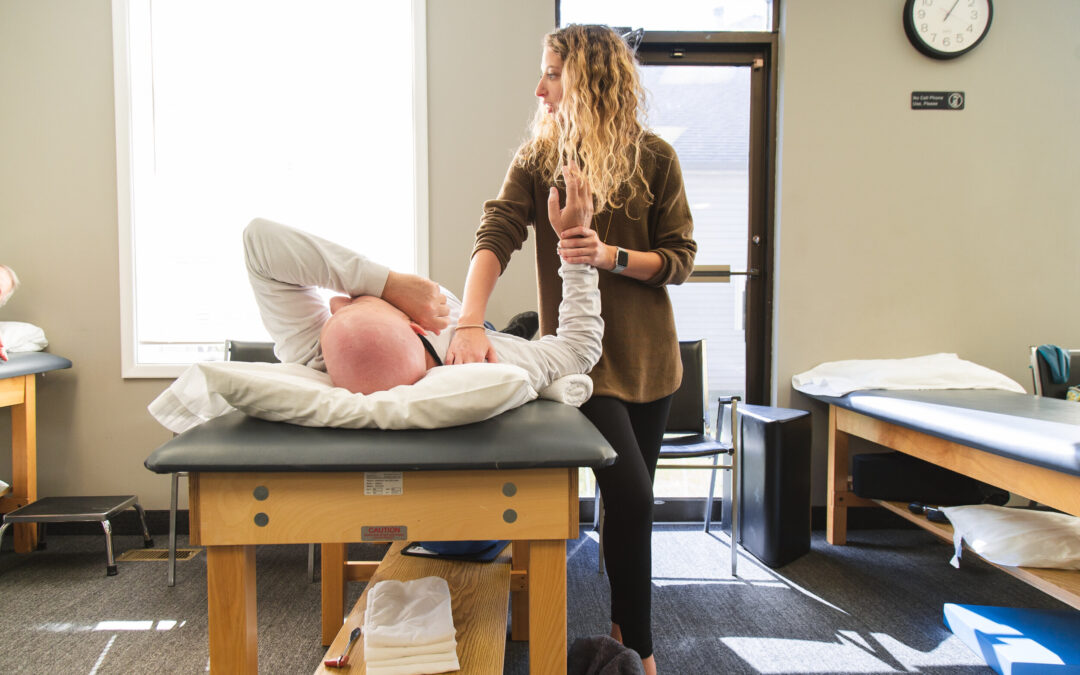Contents
Experiencing chronic pain after a biceps tear? With the right treatments, you can find relief and start working toward recovery. A torn biceps muscle is a serious injury. These tears can have many causes, but they’re typically caused by a sudden impact or motion. In many cases, they occur on the job. In 2020, the Bureau of Labor Statistics found that private industry workers experienced 11,800 sprains, strains and tears in the arm. Biceps tears are also relatively common among athletes.
After tearing the muscle, people typically experience sudden, sharp pain throughout the upper arm. While the most intense pain may subside, you will likely continue to experience a more dull, persistent pain. The region around the injury may bruise and swell, making your upper arm sensitive to touch. In addition to pain and discomfort, a biceps tear will have a significant impact on your physical capabilities. You may feel like your injured arm is especially weak, incapable of doing things like lifting heavy objects.
Having a torn biceps muscle can feel debilitating. Fortunately, recovery is possible. With physical therapy, you can start to experience relief from your pain and make progress toward restoring your arm’s functionality. Learning more about the benefits of PT for muscle strains and tears can help illustrate why physical therapy is so effective.
Key benefits of physical therapy for a torn biceps muscle
- Pain management — Physical therapy can help reduce the pain associated with a biceps tear. There are a range of physical therapy techniques used to provide pain relief. During your course of treatment, your physical therapist will use the pain management strategies best suited to your particular condition. Manual therapy refers to physical therapy techniques that involve hands-on involvement from your physical therapist and offers several effective techniques for pain relief. Your physical therapist may mobilize your joints and apply gentle, controlled pressure to injured tissue. When it comes to alleviating muscle pain, trigger point therapy is a common strategy. Trigger points, also known as muscle knots, are small pockets of tight muscle tissue. These areas often feel sore and tender. After a biceps injury, trigger points may start to develop in the muscle tissue of your arm. Trigger point therapy can help. With deliberate motions and pressure, an expert physical therapist can alleviate muscle tension and relieve the pain around your trigger points.
- Inflammation reduction — Inflammation is a common symptom associated with muscle tears. After sustaining a biceps injury, you may notice the surrounding tissue becoming more irritated and swollen. Inflammation can lead to further complications. For example, swollen tissue may press and rub against other tissue, causing irritation and pain. Physical therapy can help reduce your inflammation following an injury. Anti-inflammatory PT techniques typically focus on compression and promoting blood flow.
- Improved flexibility — If you’ve torn your biceps muscle, you will likely notice that your arm’s movement is restricted. You may only be able to move your arm a few degrees at a time. This can make simple day-to-day activities a lot more difficult. Fortunately, through physical therapy, you can work to regain your full range of motion. There are plenty of PT techniques designed to improve a person’s flexibility. These include targeted stretching exercises. After learning how to engage in these exercises, you can continue practicing them between physical therapy sessions, which can help you work toward recovery at a steady rate. In addition to stretches, your physical therapist can utilize specialized manual techniques like joint mobilization. With passive mobilization techniques, your physical therapist can assist your motions and help you gradually build flexibility in your arm.
- Strength building exercises — Strengthening the muscles around the torn biceps can be crucial for recovery. After a muscle injury, loss of strength is common and can lead to issues caused by muscular imbalances. Other arm muscles may need to take on more stress while the biceps is injured. This additional stress can cause pain and muscle tension, leading to discomfort throughout the arm and shoulder. By building strength in the right muscles, you can empower the rest of the arm to support the injured area. Common PT techniques for strength building include light weightlifting and resistance training. Your physical therapist may also guide you through functional strength training exercises. Functional exercises are exercises that relate to a practical everyday activity. With exercises that mimic practical activities, you can improve your ability to navigate through daily life.
- Atrophy prevention — A torn biceps muscle can lead to atrophy. Atrophy happens when a muscle weakens due to lack of use. Through assisted exercises and gradual weight-bearing activities, your physical therapist can keep your arm engaged enough to prevent atrophy. This helps ensure that you can keep working toward recovery without losing progress.
- Accelerated healing — Want to make your recovery as fast as possible? With physical therapy, you can make continuous progress and benefit from specialized healing-centered treatments. Manual therapy is one of the main methods physical therapists use to accelerate healing. Your physical therapist can manipulate your muscle tissue to promote better blood flow and allow much-needed nutrients to reach your injured tissue, helping stimulate natural healing processes.
How to fix a torn biceps muscle: 3 steps to take
Have you recently torn your biceps muscle? If so, early intervention is paramount. Here are three steps you should take as soon as possible:
- Seek medical attention — Muscle injuries often require medical interventions. A medical professional can assess the extent of your injury and recommend a course of treatment. In many cases, physical therapy offers the best path forward following a biceps injury.
- Get rest — Using an injured arm can make your injury worse. If you’ve recently sustained a biceps injury, it’s important to rest the injured arm as much as possible. Avoid heavy lifting and other physical activities that engage the upper arm. You may want to use a brace or sling to prevent harmful movements. Resting allows your arm to start healing without further physical trauma. While rest is often crucial, it may not be sufficient for making a full recovery. As you heal, targeted PT treatments can help facilitate your recovery.
- Start physical therapy — By starting a physical therapy program immediately, you can benefit from fast-acting pain relief techniques and strategies to accelerate healing. After a comprehensive evaluation, your physical therapist will work with you to develop a treatment plan that matches your needs and physical capabilities. As you work through your course of treatment and your condition improves, your physical therapist may adjust treatments to adapt.
Lattimore Physical Therapy can help you recover from your injury
As you heal from your biceps tear, Lattimore Physical Therapy is here to help you each step of the way. Our expert physical therapists are skilled in a wide range of treatment techniques. We have 30 team members with a Certification in Orthopedic Manual Physical Therapy (COMT). This allows us to provide the highest level of treatment through specialized manual therapy techniques. With our help, you can work through a customized treatment plan designed to help you achieve a full recovery.
Contact our team today for more information about our injury recovery programs or to schedule an initial appointment.



